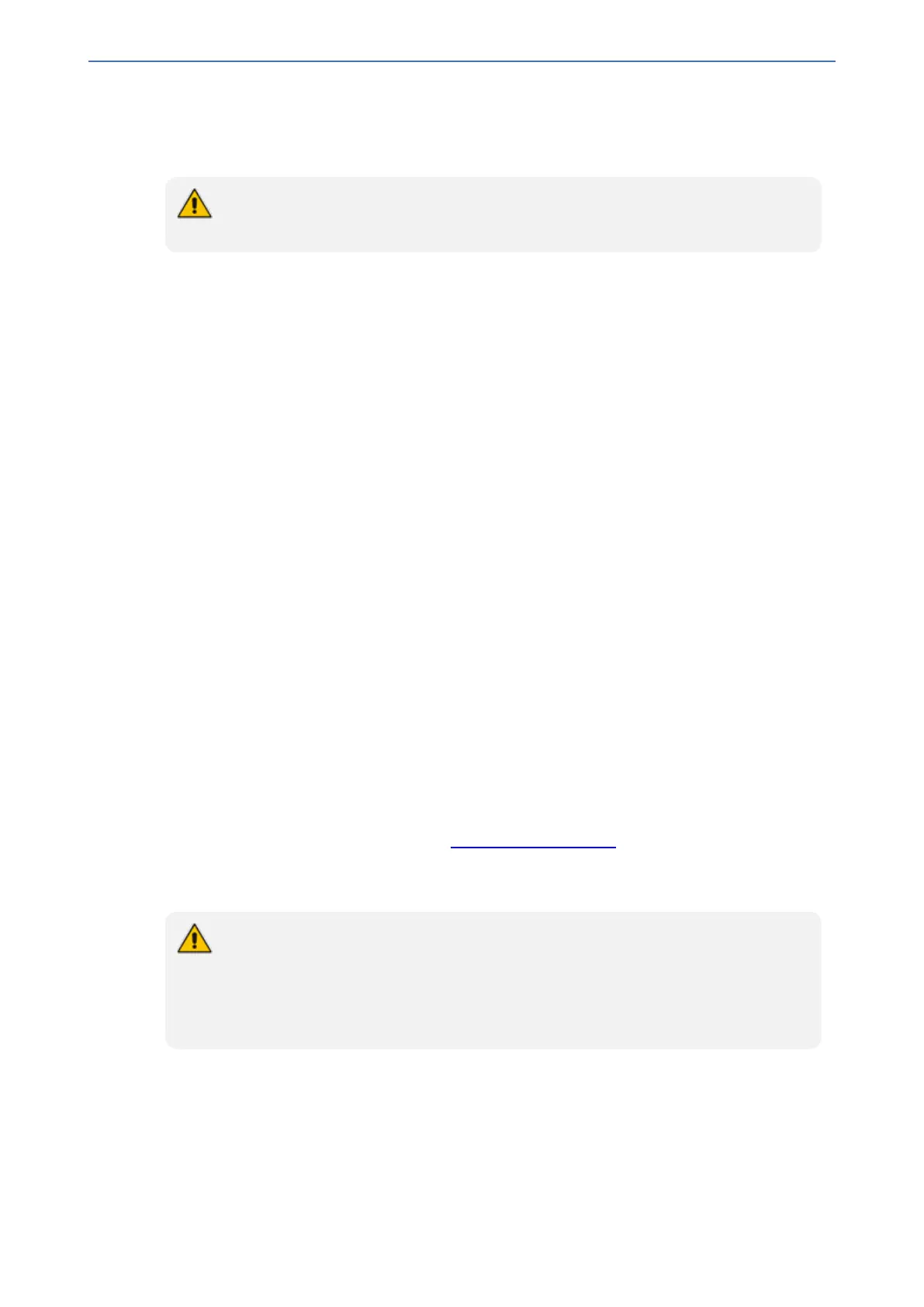CHAPTER28 Configuring Supplementary Services
Mediant 1000 Gateway & E-SBC | User's Manual
This source number can also be used as the value for the 'Source Phone Pattern' field in the
Destination Phone Number Manipulation for IP-to-Tel Calls table. The local IP address is used
as the value for the 'Source IP Address' field.
Manipulation using the ManipulateIP2PSTNReferTo parameter does not affect IP-to-
Trunk Group routing rules.
Call Forward
For digital interfaces:
The device supports Call Deflection (ETS-300-207-1) for Euro ISDN and QSIG (ETSI TS 102 393)
for Network and User sides, which provides IP-ISDN interworking of call forwarding (call diversion)
when the device receives a SIP 302 response.
Call forward performed by the SIP side: Upon receipt of a Facility message with Call Rerouting IE
from the PSTN, the device initiates a SIP transfer process by sending a SIP 302 (including the Call
Rerouting destination number) to the IP in response to the remote SIP entity's INVITE message.
The device then responds with a Disconnect message to the PSTN side.
Call forward performed by the PSTN side: When the device sends the INVITE message to the
remote SIP entity and receives a SIP 302 response, the device sends a Facility message with the
same IE mentioned above to the PSTN, and waits for the PSTN side to disconnect the call. This is
configured using the CallReroutingMode.
For analog interfaces:
The following methods of call forwarding are supported:
■ Immediate: incoming call is forwarded immediately and unconditionally.
■ Busy: incoming call is forwarded if the endpoint is busy.
■ No Reply: incoming call is forwarded if it isn't answered for a specified time.
■ On Busy or No Reply: incoming call is forwarded if the port is busy or when calls are not
answered after a specified time.
■ Do Not Disturb: immediately reject incoming calls. Upon receiving a call for a Do Not Disturb,
the 603 Decline SIP response code is sent.
Three forms of forwarding parties are available:
■ Served party: party configured to forward the call (FXS device). To configure this type of
forwarding party and per endpoint, see Configuring Call Forward.
■ Originating party: party that initiates the first call (FXS or FXO).
■ Diverted party: new destination of the forwarded call (FXS or FXO).
● When call forward is initiated, the device sends a SIP 302 response with a contact
that contains the phone number from the Call Forward table and its corresponding
IP address from the routing table (or when a proxy is used, the proxy’s IP address).
● For receiving call forward, the device handles SIP 3xx responses for redirecting
calls with a new contact.
Enabling Call Forwarding
The following procedure describes how to enable call forwarding.
- 654 -

